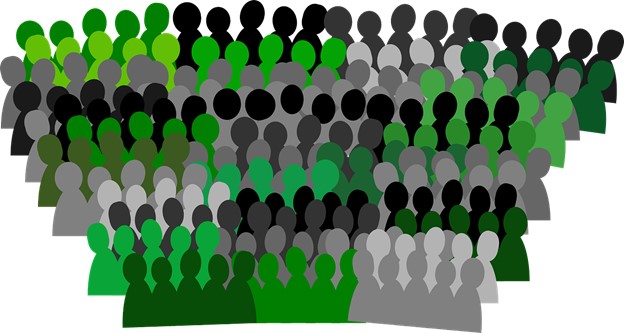Healthcare professionals often rely on A1C measurements to assess a person’s diabetes management and risk for health complications. Even for people who do not have diabetes, A1C can help determine if someone has prediabetes and their risk for developing diabetes. However, many factors can influence A1C, including a person’s race, ethnicity, and hemoglobin status. Studies have shown that A1C measurements are less accurate for people of African, Mediterranean, or Southeast Asian descent. Thus, while A1C is a valuable tool for standardized, long-term diabetes care, other metrics used to assess diabetes health, like Time in Range, can provide helpful supplementary information to A1C alone.
What is A1C?
A person’s A1C is a measure of their average blood sugar level over the previous two to three months. When people have a high A1C, it means that the principal protein in their red blood cells (called hemoglobin) has more sugar attached to it. Healthcare professionals typically use A1C as an indicator of glucose management, and high A1C values are associated with an increased risk of diabetes-related complications. For people with diabetes, too much glucose in the blood can lead to heart disease, kidney disease (nephropathy), vision loss (retinopathy), and nerve damage (neuropathy). A1C is the most widely accepted, standardized estimate of blood sugar over the previous two to three months. Studies have demonstrated that lowering A1C significantly reduces the risk of these complications.
What are “normal” A1C levels, and how does this depend on race?
According to the American Diabetes Association, a person without diabetes has an average A1C below 5.7%. People with prediabetes, who are at risk for developing type 2 diabetes, normally have an A1C between 5.7% and 6.4%. Though A1C has proven to be very helpful in diagnosing diabetes and assessing diabetes management, this measure alone is not appropriate to help guide therapy decisions. The standardized A1C values for prediabetes and diabetes are based on data primarily from white people and did not account for racial and ethnic variations in A1C. As a result, A1C standards may be biased toward white individuals.
According to the American Diabetes Association, studies1 show that all non-white racial and ethnic groups have slightly higher “normal” A1C levels than white people. Compared to white individuals with prediabetes, who have an average A1C of 5.78%:
- Black individuals with prediabetes have an average A1C of 6.18%
- Indigenous individuals with prediabetes have an average A1C of 6.12%
- Asian individuals with prediabetes have an average A1C of 6%
- Hispanic individuals have an average A1C of 5.93%.
Racial and ethnic variation in A1C also exists in children and young adults who do not have diabetes or prediabetes, though the differences are smaller.
Importantly, the higher average A1C levels among people of color have not been shown to increase risk for diabetes-related complications. A 2019 study2 suggests that the variation in A1C could be attributed to biological differences in red blood cell lifespan and the glycation of hemoglobin (how glucose attaches to red blood cells), rather than differences in glycemic levels and glucose management.
A1C measurements are not perfect. While effort has gone into perfecting the accuracy of the A1C test, the margin of error is still around 0.4 percentage points. This means a person with a measured A1C of 6.8% could have an actual A1C ranging from 6.4% to 7.2%.
How does this A1C limitation affect people of color?
Black, Hispanic, and other people of color – who have, on average, a higher A1C than white individuals –are being assessed using A1C standards that primarily reflect the averages seen in white populations.
Fortunately, many healthcare professionals and diabetes experts are aware of this variability in A1C and use additional metrics to make informed healthcare decisions. In fact, the American Diabetes Association’s 2020 Standards of Medical Care in Diabetes acknowledges that “A1C levels may vary with race/ethnicity independent of glycemia.” These Standards of Care are used widely to help guide diabetes healthcare professionals and ensure that racial and ethnic differences in A1C are not ignored in diabetes care.
This is especially important because diabetes is most prevalent in non-white groups. The CDC’s diabetes statistics report shows alarming differences among races in the estimated percentage of adults with diabetes (including diagnosed and undiagnosed) in the US, from 2013 to 2016:
- Black, non-Hispanic: 16.4%
- Asian, non-Hispanic: 14.9%
- Hispanic: 14.7%
- White, non-Hispanic: 11.9%
References
- Herman, William, et al. Differences in A1C by Race and Ethnicity Among Patients With Impaired Glucose Tolerance in the Diabetes Prevention Program. Clinical Care/Education/Nutrition/Psychosocial Research.
- Bergenstal, Richard M. et al. Emphasizing Optimal Diabetes Management for All Races/Ethnicities, but Not Race/Ethnicity–Specific Cut Points for Hemoglobin A1c. JAMA Ophthalmol. 2019;137(11):1329-1330. doi:10.1001/jamaophthalmol.2019.3233







